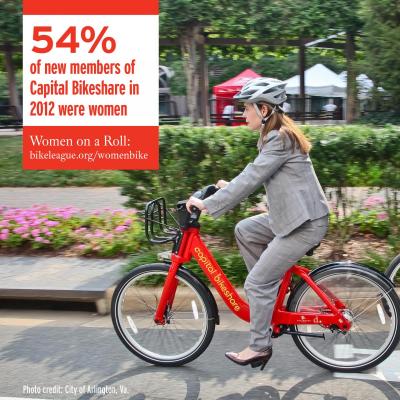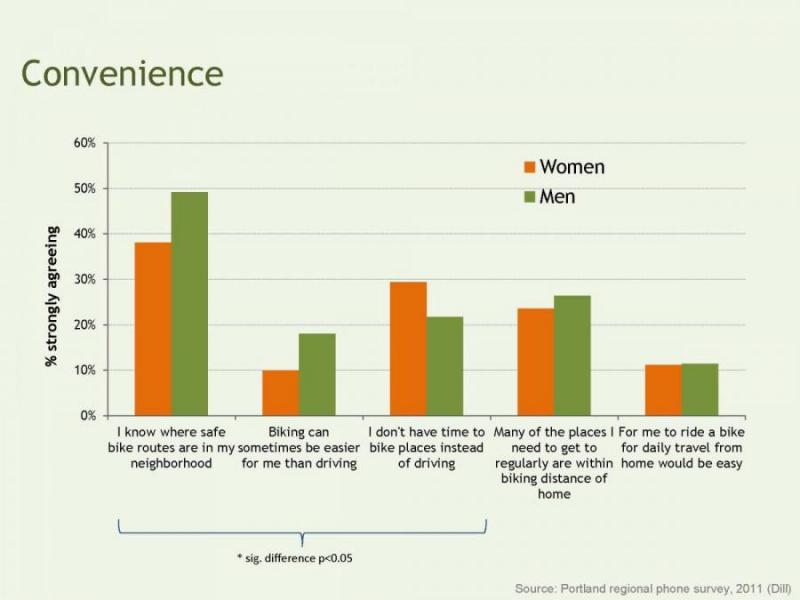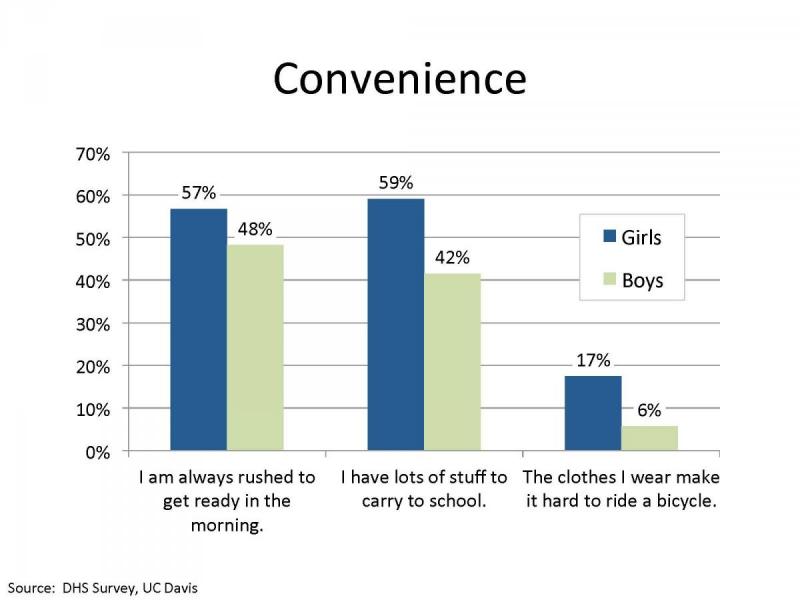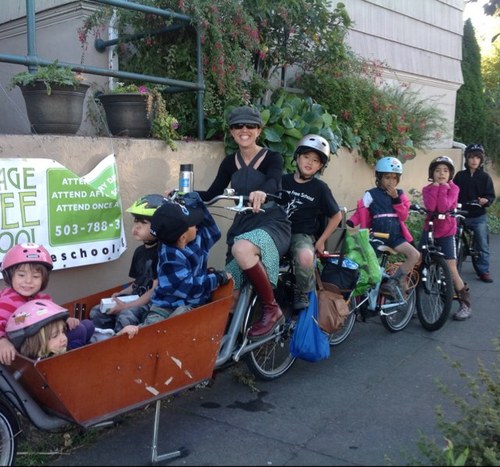DISCOVER YOUR LOCAL BICYCLING COMMUNITY
Find local advocacy groups, bike shops, instructors, clubs, classes and more!
Kids, Cargo & Cycling Convenience
 It’s always a pleasure to talk bikes with Sarah Goodyear, a journalist at Atlantic Cities, but her read of our “Women on a Roll” report zeroed in on a particularly important trend: “Bike-share is key to closing the gender gap.“
It’s always a pleasure to talk bikes with Sarah Goodyear, a journalist at Atlantic Cities, but her read of our “Women on a Roll” report zeroed in on a particularly important trend: “Bike-share is key to closing the gender gap.“
As Goodyear gleaned from our first Women Bike report, there’s a lot of pent-up desire among American women who want to ride. But, when you look at federal data, there’s still a huge discrepency between the sexes, because, for one, women are less likely to feel comfortable traveling on two wheels on streets designed for speeding cars. (Check out our post on comfort last week.)
But, as Goodyear writes, “there’s one place where the gender disparity between men and women in cycling is leveling off, and that, tellingly, is bike share.”
One of the reasons? Systems like Capital Bikeshare in D.C. and Citi Bike in NYC make cycling a quick, flexible means of mobility that fits more easily into our day-to-day activities. That convenience (one of the 5 Cs we identify in “Women on a Roll”) is critical for women because, anecdotally and statistically we have more demands on our time and travel.
As we highlight in our report:
- In two-worker households, women make twice as many trips to drop off and pick up children than men (66% vs 34%).
- More than 40% of women in two-adult households with small children chain non-work trips into their commutes.
- Women are more likely than men to report as a barrier to bicycling: Lack of time (29% vs 21%); inability to carry children or other passengars (19% vs 7%); and inability to carry more stuff (32% vs 20%)
- While shopping accounts for 25% of bike trips in the Netherlands and Denmark (which have achieved gender parity in bicycling), only 5% of such trips are done by bike in the United States
As Elly Blue, the author of Everyday Bicycling, notes, there’s nothing inherent about being a woman that makes our transportation needs different. “But, unfortunately, we have an imbalanced division of labor and income in U.S. that means that many women essentially work a second shift. When we work for money, we make considerably less than men—and the gap is especially pronounced for women of color,” she says. “Then there’s unpaid household labor, like errands, carting kids around, and caring for sick or elderly adults, which is statistically is more likely to fall to women. This all adds up to a big transportation headache, especially if you live in a place where your home, your work, your kids’ school, grocery stores, doctors’ offices, and other destinations are spread far and wide.”
On our webinar last week, Jennifer Dill, a researcher at Portland State University, shared that women are half as likely as men to say that bicycling is sometimes easier than driving, and far more likely to report the increased time commitment reduces their ability to bike.
 And it’s not just moms and working women who feel the converging forces of less time and more to carry. As Susan Handy, a researcher at UC-Davis, explained during the webinar, even high school girls are more likely than their male counterparts to cite time, cargo and clothing constraints when it comes to bicycling.
And it’s not just moms and working women who feel the converging forces of less time and more to carry. As Susan Handy, a researcher at UC-Davis, explained during the webinar, even high school girls are more likely than their male counterparts to cite time, cargo and clothing constraints when it comes to bicycling.

So, as Handy noted, the discussion about convenience quickly turns into a conversation about equiptment, as well. The type of bikes and gear available play a big role in making it possible and convenient to use a bicycle when you’re doing more than pedaling directly to the office and then home again. In Women on a Roll, we profile Emily Finch, a carfree mother of six who gave up her GMC Suburban for a bakfiets bicycle that now shuttles her kids and hauls daily family necessities. (Finch told her amazing story at the 2012 National Women’s Bicycling Summit.)
 However, as Blue points out, bikes like Finch’s bakfiets can be both expensive and often unavailable outside of the best American cycling cities. In Minneapolis, Cycles for Change is working to close that income and consumer gap by loaning out, not just bikes, but trailers, too — so women can ride with their kids and cargo. But we still have a long way to go, not just in making our streets as comfortable as the Dutch and Danish, but making practical bikes and family-friendly equiptment commonplace, as well.
However, as Blue points out, bikes like Finch’s bakfiets can be both expensive and often unavailable outside of the best American cycling cities. In Minneapolis, Cycles for Change is working to close that income and consumer gap by loaning out, not just bikes, but trailers, too — so women can ride with their kids and cargo. But we still have a long way to go, not just in making our streets as comfortable as the Dutch and Danish, but making practical bikes and family-friendly equiptment commonplace, as well.
Which brings us back to bike share. In a growing number of cities, like Minneapolis, bike share is the ultimate tool of cycling convenience: hundreds of low-cost, easy-to-adjust, at-your-fingertips bikes that can be ridden in everyday clothes to myriad destinations… and then left behind if another form of transportation is needed. Easy to see why women are embracing these systems — and why bike share is trending more quickly toward gender equity in bicycling, than their communities at large.
For instance…
- According to a 2012 study of North American bicycle sharing systems, 43% of all bike share members were female.
- In 2011, 44% of Nice Ride bike share members in Minneapolis were women.
- In 2012, more than half of new members (54%) of Capital Bikeshare in D.C. were women.
And, lucky for us, these systems are on the rise. “More and more cities in the U.S. are getting bike-share,” Goodyear writes. “Chicago rolled out its 4,000-bike system this summer and the San Francisco Bay Area will be the next to launch, at the end of August (albeit with a mere 700 bikes). As bike share becomes an integrated mode of transportation around the country –- and as bike retailers realize that women represent a huge and underserved market — the gender balance just might start to shift here in a real and lasting way.”